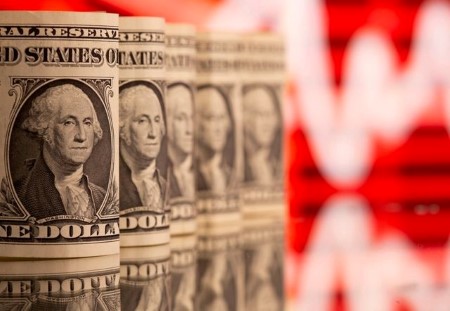




Quarterly Economic Growth Release: More BSP cuts to come
 DOWNLOAD
DOWNLOAD

Monthly Economic Update: Fed catches up
 DOWNLOAD
DOWNLOAD

Inflation Update: Steady and mellow
 DOWNLOAD
DOWNLOAD


US Treasuries rally as market anticipates Fed pivot

NEW YORK, Jan 9 (Reuters) – Treasury prices rallied further on Monday on expectations of a halt to rising interest rates, though the market faces a hawkish Federal Reserve that aims to see inflation slow a good deal more before it can pivot.
Fed Chair Jerome Powell may indicate more time is needed to show inflation is under control when he speaks on Tuesday. But consumer price data on Thursday could back the market’s view that inflation is on track toward the Fed’s 2% target.
Data on Friday showed US services activity contracted for the first time in more than 2-1/2 years in December, which gave both bonds and equities the green light to rally after labor market data showed wage growth rose less than expected.
“It’s a tug of war between the markets not believing the Fed can tighten policy and stay there for an extended period of time versus expectations of weakening inflation and weaker economic data allowing the Fed to ease at some point later this year,” said Andrzej Skiba, head of the BlueBay US fixed income team at RBC Global Asset Management in New York.
But Skiba said markets may have moved too quickly and too far, as the 10-year Treasury’s yield is below 3.6% and the Fed indicates the terminal rate will be above 5% this year:
“You could argue that quite a lot of good news on that front has been priced in.”
Atlanta Fed President Raphael Bostic reiterated on Monday that rates will have to stay high “well into 2024,” and said it is fair to say that the Fed is willing to overshoot.
The yield on 10-year Treasury notes fell 3.9 basis points to 3.532%, and the two-year’s yield, which often reflects interest rate expectations, fell 5.7 basis points to 4.204%. Yields move inversely to price.
The gap between yields on three-month bills and the benchmark 10-year note inverted further to a record -136.10 in early trading, and was last at -108.5. An inverted yield is consider a harbinger of recession.
The Fed is determined to tame inflation but signs of a weakening jobs market could make it hard for the US central bank to stay the course, said Jim Caron, chief fixed income strategist at Morgan Stanley Investment Management in New York.
“They need to kill inflation. They need to make sure it gets to target and stays anchored at target levels,” Caron said.
But the political narrative for the Fed will be difficult as Main Street starts to feel the pain of a slowing economy.
“Despite all the layoffs we’re hearing about in Corporate America, people are finding jobs – but they’re finding lesser quality, lower-paying jobs,” he said. “That’s a very important caveat that I don’t think the markets are really focusing on.”
The Treasury will sell USD 90 billion of debt this week, starting with USD 40 billion of three-year notes on Tuesday. On Wednesday, USD 32 billion of 10-year notes will be sold, and on Thursday, USD 18 billion of 30-year bonds.
The yield on the 30-year Treasury bond slid 2.6 basis points to 3.666%.
The breakeven rate on five-year US Treasury Inflation-Protected Securities (TIPS) was 2.22%.
The 10-year TIPS breakeven rate was last at 2.214%, indicating the market sees inflation averaging 2.2% a year for the next decade.
The US dollar 5 years forward inflation-linked swap, seen by some as a better gauge of inflation expectations due to possible distortions caused by the Fed’s quantitative easing, was last at 2.454%.
(Reporting by Herbert Lash; Editing by Lisa Shumaker and Kevin Liffey)
This article originally appeared on reuters.com





 By Reuters
By Reuters